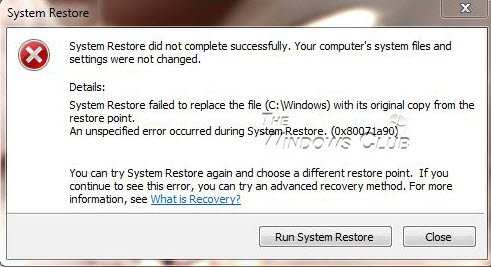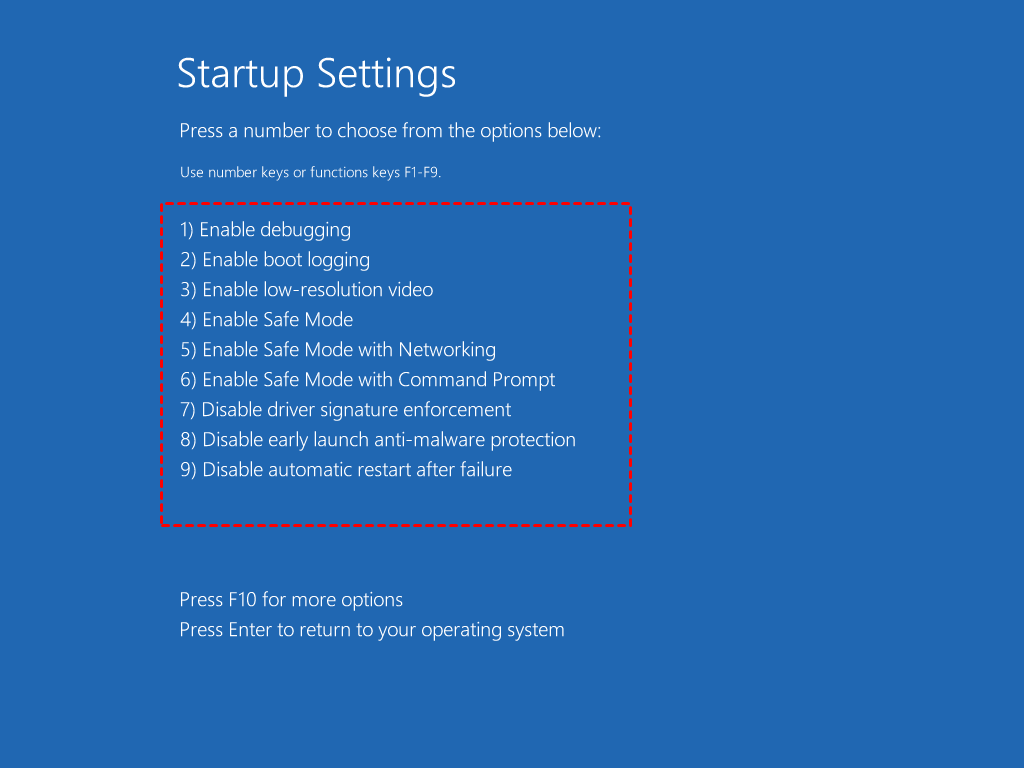

- SYSTEM RECOVERY WINDOWS 10 FROM A NON 10 SYSTEM INSTALL
- SYSTEM RECOVERY WINDOWS 10 FROM A NON 10 SYSTEM UPDATE
- SYSTEM RECOVERY WINDOWS 10 FROM A NON 10 SYSTEM PC
- SYSTEM RECOVERY WINDOWS 10 FROM A NON 10 SYSTEM DOWNLOAD
If you’ve opted to keep your files, you can click on View apps that will be removed to see which apps you may need to replace that list isn’t available if you’re removing everything.

At this point you’re running on battery power, so you’ll be instructed to plug in your PC. Confirm your choices and then select Next.
SYSTEM RECOVERY WINDOWS 10 FROM A NON 10 SYSTEM DOWNLOAD
If you download a new version of Windows, you can choose to just remove your files. You also, once again, can decide whether you want to download Windows or reinstall from the device.
SYSTEM RECOVERY WINDOWS 10 FROM A NON 10 SYSTEM PC
/001_how-to-use-system-restore-in-windows-2626131-5becb9c6c9e77c00510bc2e9.jpg)
If you do a Local reinstall, you can choose to restore preinstalled apps. (No, I don’t know why this option appears in two separate places. If you opted for Local reinstall, you can choose whether you want to restore the preinstalled apps and settings that came with your PC, and you have another chance to either reinstall Windows from your device or download a fresh copy.Click on the Change settings link to see more options.(Don’t worry - you’ll get a chance to change that if you need to before the reset happens.) Windows will either be downloaded and reinstalled (if you chose Cloud download) or reinstalled from your device (if you chose Local reinstall).īefore you reset, Windows tells you exactly what will happen. The next screen will tell you that the apps and files will be removed, along with any provisioning packages installed by your workplace.
SYSTEM RECOVERY WINDOWS 10 FROM A NON 10 SYSTEM INSTALL
You can do a Local reinstall or download and install a new version of Windows. The former will take more time (it’s over 4GB to download) but may work better if you suspect your problem is with your OS rather than an app or a misapplied setting. Either way, the next screen will let you choose either Cloud download to let you install a brand new version of Windows or Local reinstall to let you simply reinstall from your device.You can keep your files when you reset Windows 11, or start from scratch. If you’re going to get rid of the computer, select Remove everything.
SYSTEM RECOVERY WINDOWS 10 FROM A NON 10 SYSTEM UPDATE
If you’re recovering from an update issue or are trying to remove a bad app, you could try Keep my files first. Keep my files will remove apps and settings but let you keep any personal files while Remove everything will reset the computer to its “as-new” state. You’ll be able to choose from one of two options.You can try to fix your issue first by selecting Fix problems without resetting your PC.The Recovery screen lets you easily reset your PC. Alternatively, click on the Start icon, select Settings, and go to System > Recovery.Click on the search icon in your task bar and type reset, which will bring up Reset this PC as the best match.If Windows 11 is working - or even if it’s mostly working - it’s simple to do a reset. There is also a different method of reinstalling Windows called “Fresh start” (formerly “Refresh”). You can do it from the Windows interface or, if you’re in trouble, from the more basic Safe Mode. There are several ways to initiate a reset in Windows 11 depending on what you need to do. But before you get the no-longer-needed computer out of your house, you’re going to want to wipe all your data off the hard drive first. Resets are also useful if you’ve just bought a spanking new system, loaded all your data onto it, and now want to sell / trade in / give away / discard your old system. (By the way, you have backed up your computer, right?) In both cases, I was able to save an otherwise unusable PC by doing a reset, which removes all (or most) of the files and apps on the hard drive and reinstalls Windows. (It would stop responding to input one minute after it booted.) Another time, a Windows 10 system decided that it didn’t like the latest update and began misbehaving.

The battery ran out in the middle of the update and voila! I was stuck with what I was sure was now a very expensive brick. A couple of years ago, I made the mistake of not checking to make sure my laptop was securely plugged in while Windows was undergoing a major update. When you’re running a Windows system, sometimes things just go wrong.


 0 kommentar(er)
0 kommentar(er)
